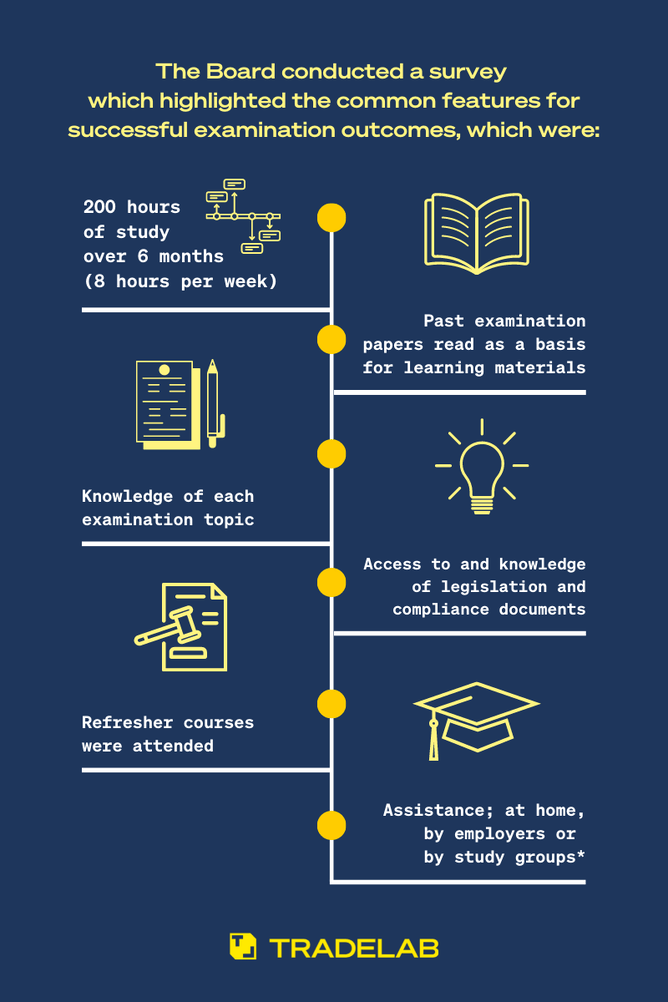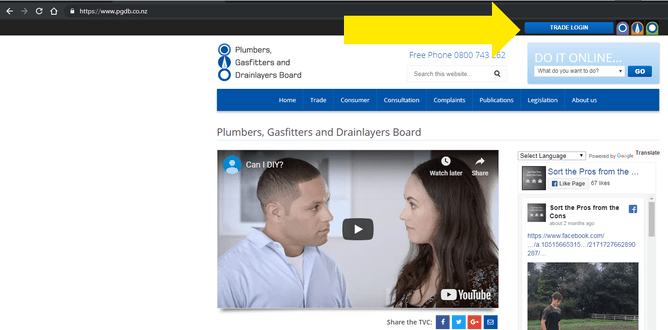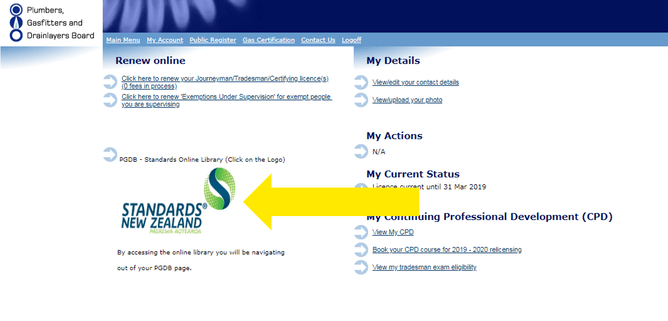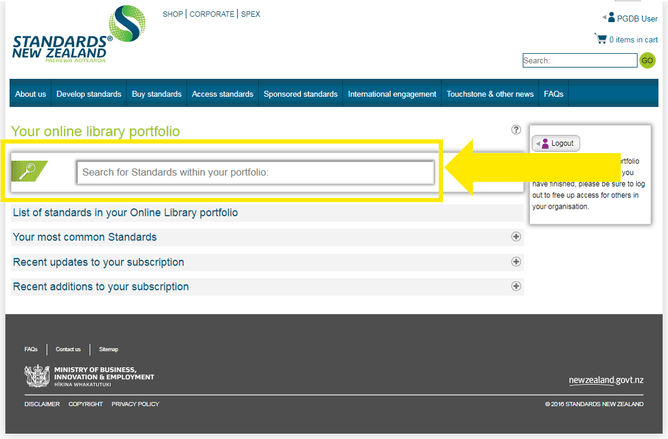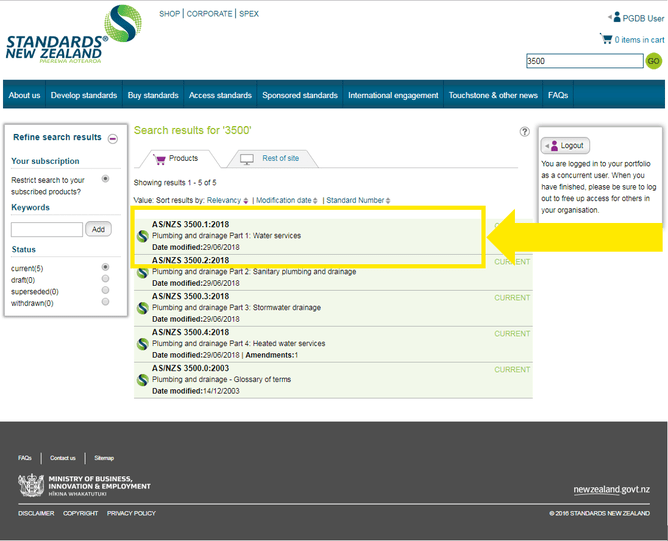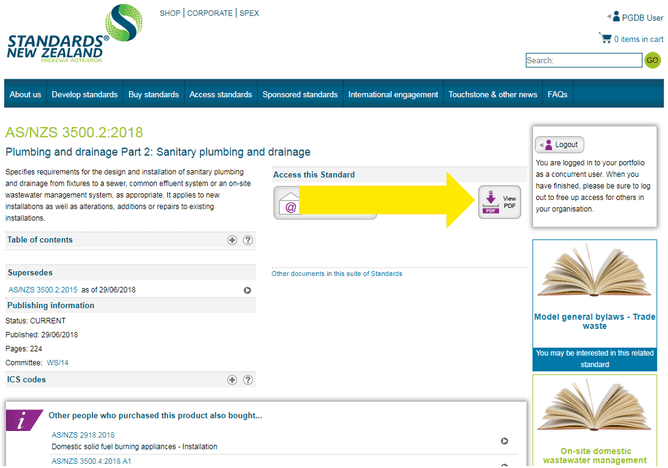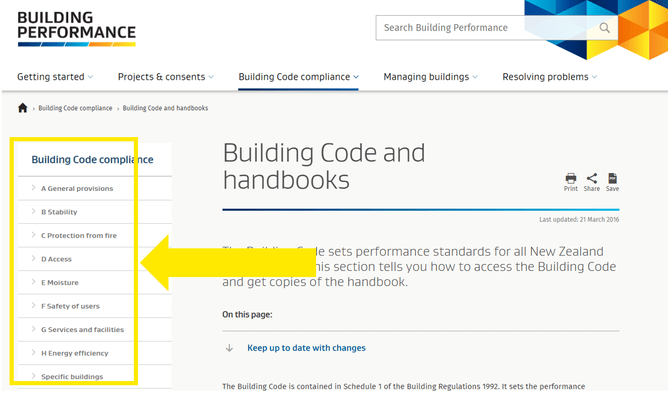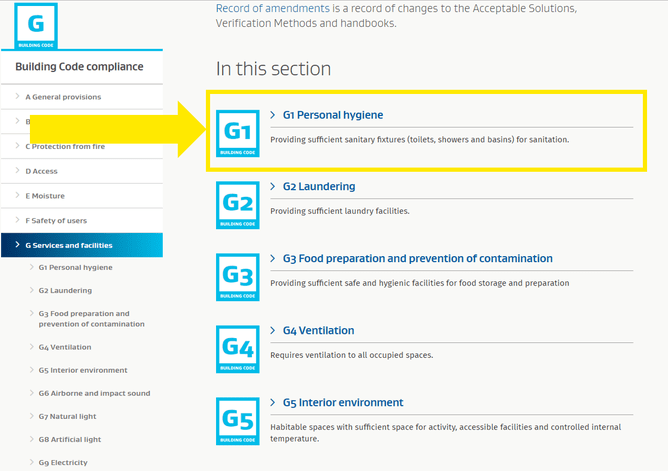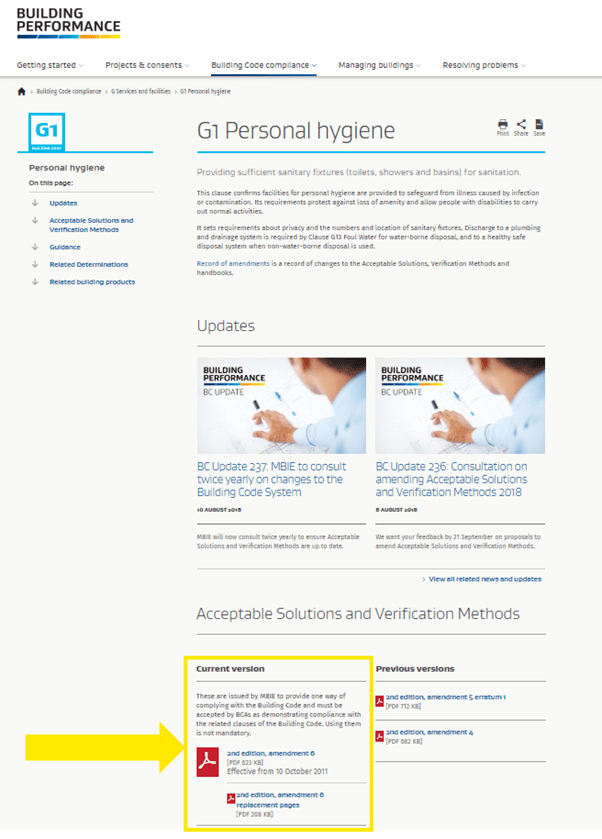So, your sitting you PGDB Plumbing, Gasfitting, or Drainlaying Exam!
This is an exciting and nerve racking time for you! I left school when I was 16 as it wasn’t for me and sat my first PGDB Exam when I was 20 and trust me, I was nervous as hell. I wasn’t good at exams while I was at school and not studying for an exam for 4 years certainly didn’t make me any better!
Since then I have gone on to complete a Bachelor of Construction (CE) graduating as a Senior Scholar. Safe to say I finally learned how to learn and study for exams!
When I was in your position I found there was a serious lack of information surrounding the topic and so now, many years later, I thought it was appropriate to provide you with some insights on how to maximise your chances of success.
The following links will take you to different parts of this post, so you can skip to the information you’re after. However, I recommend you read the whole thing.
If you have any other area of concern or questions please feel free to drop us a line and we can either get back to you directly, or if appropriate we will update this content.
Registering for the exam
How to register for the PGDB exams
Due to the board changing the licensed exams to be online there are now two different ways to register for the exams.
You can register for the licensed exams online. The certifying exams can be applied for via the mail or online. Please note the cut-off date for the certifying exams change depending on whether you apply online or through the mail.
The following links will take you to the info packs the PGDB puts together describing the application processes.
Cut off dates
Due to the licensed exams taking place online they are far more flexible in their timing and locations. There is a brief article on the new online exams and associated video that can be found below.
At the time of writing the cut off dates for the certifying exams is 30 April for the June Exam and 30 September for the November Exam if applying by post, and 5pm 10 May for the June Exam and 5pm 10 October for the November Exam if applying online.
Exam Preparation
Refresher Courses
I don't know about you, but when I sat my PGDB exams there was no one who actually gave me the information I needed to learn to pass the exam. I spent so much time researching different pieces of information to try and piece it all together, eating into the time I had to learn and study for the actual exam. And even then, I didn't know whether I had all the information I needed, and how much of the information we had gathered was irrelevant.
Refresher courses are a good way to get the information you need. But they are typically only hosted in major cities and even then might not be in a convenient part of town, if they get enough people, and may not suit your schedule. In our quest to remove barriers preventing tradies from getting the best information we have created our refresher courses online to address all the above issues and provide an on-demand service, so you can come back to any piece of content at any time, as many times as you want, and where ever you are.
I would have loved to have access to refresher courses when I was sitting my exams. You can talk to your mates about what they are studying. But let’s face it, that’s like the blind leading the blind – neither of you know what you should be studying. Refresher courses help give you confidence you have the right information in front of you. And for the sake of not wasting your life, $500 really isn’t that much, you’d only need to get a 25¢/hr pay rise to recoup the cost over a year. It’s nothing. The reality is you should be getting at least $10k/year more once you pass this exam, so you will have paid for the refresher cost in under 3 weeks. But it all depends on the region you work in and what you’re getting paid now.
When to study
Fundamentally, you want to start to get in tune with your body and mind. You want to be studying when you are most mentally active and have the most energy. Most people are either morning or evening people (there are some special snowflakes that are morning and night people and have a lull in the middle of the day) and you can do the following quiz to figure out which one you are. Once you know you should organise your study around this, and stick to the script! Its short-term pain for long term gain.
Take the quiz: Are You an Early Bird or a Night Owl?
For me personally, I am one of those special snowflakes. From 5am – 2pm my mind is active and from about 3 – 6pm I feel drained and I struggle to process information. Once I hit about 7pm I get my second wind and can work through till I fall asleep.
Because I typically have a ‘full brain’ when I get home from work I try not to study at this time. I might quickly read through some things, but I don’t try to learn, just flick through a subject or two. I know that its best for me to study before I go to work, and I plan my day accordingly. This also prevents any of the events from work impacting my mental state while I’m studying.
It can be a pain in the ass! But remember that this is a bit of short term pain for some real long-term gain. If you fail this exam you will have to do all of this again, and when you do you might listen to these tips and end up waking up at some ungodly hour anyway!
Take the quiz: Are You an Early Bird or a Night Owl?
Planning
It is important to plan out what you’re going to study and when. Depending on how much time you have left yourself will impact the intensity of your study. I’d recommend you do some tests to figure out where your strengths and weaknesses are, compare this to the exam weighting below (note it is the PGDB’s guide and the exam will vary) and from those two things establish where you need to spend time.
Depending on how confident you are you should start studying 6-12 weeks before the exam. If you are nervous, start earlier the infographic above identified some people start up to 6 months before the exam. We have set our refresher course up to be available for 8 weeks with 6 weeks’ worth of in depth content. Allowing you 2 weeks to come back to topics you need to focus on more.
I would suggest taking some time off the week before the exam. Personally, I took the day before off and this was more to do with not having anything at work mess with my mental wellbeing.
I know people who took the whole week before off to study. I think that is a bit extreme, but if that’s what you need to do to feel comfortable come exam day. Just do it.
Being an active learner
Teach Someone Else
My challenge to you is to study as if you had to teach someone what you are learning. Seriously.
Studies by psychologists at the University of California at Berkeley have concluded that verbally explaining concepts to others helps you to get a better grasp of what you’re talking about.
What ends up happening is all of a sudden you have to think about the questions other people might ask you. So, you end up asking yourself the questions you could get asked. Which then makes you get a more rounded knowledge base on the question.
This is a technique that I use on a daily basis. I actually sometimes have the conversation in my head rather than with another person and find it really helps! Give it a go, see if it works for you.
Engage with the Content
Don’t just read or listen to whatever is in front of you. Engage with it. If you have words explaining something, try to draw it. If you have a picture, try to write a short paragraph explaining it. It will help embed the knowledge in your mind.
And remember – if you can’t explain it simply, you don’t understand what you’re talking about.
What the Exams Cover and Topic weighting
The basic premise of the licensed exam is to assess your knowledge of installing and maintaining systems. The premise of the certifying exam is to assess your knowledge of designing and specifying systems.
Although the exams change year to year the PGDB provides guidance on the typical weighting for each exam. A link to the typical exam weightings and full breakdown is below.
Reference materials
Past exam papers
Past exam papers are a good place to start to understand the types of questions you’ll be asked. But they’re certainly not the only things you should look at. The exams are ever changing and as standards and legislation changes, the exams must too.
The following link will take you to the past exam papers.
Tools you need
- Blue pen, black pen, red pen
- Highlighters (yellow, orange, pink, green, blue)
- Pencils
- Pencil sharpener
- Eraser
- Scale ruler with 1:25, 1:50 and 1:100 scales
- Calculator (must not have programmable functions or printable capability)
- Protractor
- 30°/60° Set square
- 45° Set square
- Compass
Legislation
Legislation is a really hard one to study as its large and complex. The key thing with legislation is knowing what parts of each piece of legislation you should look at. You can find all the legislation you need by clicking the link below and searching for it.
Standards
Fortunately for you the PGDB has a deal with Standards NZ and you can get access to all the standards you need by going to the following link and log in to your trade login, then click on the Standards NZ logo and you’re away!
Be sure to download the following standards:
- AS/NZS 3500.0
- AS/NZS 3500.1
- AS/NZS 3500.2
- AS/NZS 3500.3
- AS/NZS 3500.4
- AS/NZS 5601.1
- AS/NZS 5601.2
NZBC
The NZBC Clauses can be downloaded for free using the following link. There is a column on the left-hand side of the website with the different clauses to download. There is a wider range of information you need from this website than the standards and I’d recommend downloading:
- B2 – Durability
- E1 – Surface Water
- E2 – External Moisture
- E3 – Internal Moisture
- G1 – Personal Hygiene
- G10 – Piped Services
- G11 – Gas as an Energy Source
- G12 – Water Supplies
- G13 – Foul Water
- H1 – Energy Efficiency
Commitment
The first thing you need to ask yourself is why the hell are you sitting this exam? Why are you going to put yourself through the pain of learning all this information? Is it money? Is it so you can start your own company? Whatever it is, know why.
I want you to answer this question seriously, know why you are doing this. Now write it on a piece of paper in big solid block hand writing. I want you to pin it to your wall next to your bed. Read it daily. Never forget why you decided to put yourself through this pain. And make sure you don’t have to do it twice.
Let’s say you started your apprenticeship when you were 17 and you retire at 65. That’s 48 years or 576 months. Right now, you are talking about spending a couple of hours a day for about 3 of those months studying for this exam. That’s just 0.5% of your working life. In the big scheme of things, the time sacrifice is nothing.
When your mates want you to come party, think about why you’re doing this. Think about what you will do with an extra $10k and remember that your mates don’t care whether to pass this exam and get that extra $10k or not.
You will have moment where you want to give up. It’s natural for all of us. When you get to those moments, watch one of these videos. At one point I watched one of these every day for a week to keep me on track.
Creating an environment that fosters learning
Comfort is Key
Creating an environment that you are comfortable in is important. But don’t make it too comfortable or you’ll fall asleep! Sitting at a desk or table is typically best.
Again, get in touch with your body and mind. Try a few different spots and see what works for you. Some people study best in the park, but that certainly doesn’t work best for me.
Personalization
For some people, a little personalization in the study space can go a long way toward proactive studying. Adding some decorations such as family photos or a poster with an inspirational quote can help motivate some people to keep pressing forward.
Using colours such as blue, purple and green tend to bring about feelings of peace and balance which can help study performance.
Don’t focus on this too much – remember, decorating a room to procrastinate will not help you achieve success.
Clear Away the Clutter
Keeping your study space clean and organized can also help improve study time. An unorganized or messy study area can be a distraction. Whether it’s not being able to find the right paperwork, or a stinky smell from old food, a study space that is unorganized will also be ineffective.
Working in a clean space can help improve focus and peace of mind. For starters, try organizing scattered papers at your study area into one stack.
Forget About Your Phone
Part of your planning to study should be making sure you have all the information you need for that session before you start. Therefore, you don’t need your phone. It won’t help you get the job done.
Don’t even use it as a calculator. If you don’t have one go and buy one now. You’ll need one for the exam anyway.
As Eric Thomas says “some of you love your cell phone more than you love success! And your cell phone ain’t brining you nothing but a bill!”
Sounds and Music
If you struggle to concentrate I recommend giving https://brain.fm/ a go. You can get a few free sessions to test it out and if it works for you then sign up. Most people try to listen to music while studying but its scientifically proven to reduce your ability to concentrate and retain information – even though people will swear the study better with music, it really just helps them pass time faster.
Understanding the difference between closed and open book exams
Closed and open book exam differ greatly. Most people think that open book exams are easier, but in my experience it’s the opposite. The reason for that is that the breadth of questions that can be asked it much larger.
You must study for open and closed book exams differently. And because the PGDB change which books you get for each exam, and they change them for the same exam each time you sit it, you must approach the study for every exam differently.
For the parts of the exam that are open book make sure you know the fastest way to find the information. In this situation it is more important to know where to find the information fast, than to know the information off the top of your head.
For the closed book sections of the exam – make sure you know the information!
Types of learners and how this should affect the way you study
One of the most important aspects of studying is understanding how you learn. It’s generally accepted that there are three different types of learners: Visual, Auditory, and Kinaesthetic.
For me personally, I’m an auditory and visual learner. If I hear someone talking about something that generally transfers into my memory bank the easiest, followed by visually. Therefore, provided I’m not in public, you would probably find me talking out loud as I study so I can hear the words I’m reading.
Understanding the way you learn is paramount to increasing you study efficiency, and also understanding this will have massive benefits for the rest of your life – I highly recommend finding out.
If you would like to find out what type of learner you are I recommend taking the following test (its free). Once you understand this the following will make a lot more sense to you.
Take the quiz: What's Your Learning Style?
Take the quiz: Are You a Visual, Auditory, or Tactile Learner?
Visual
Visual learning is a style which you maximise your ability to retain information using graphical content.
This includes using things such as:
- Graphs
- Maps
- Diagrams
Study strategies for visual learners include:
- Colour coding notes
- Drawing things
- Study by yourself, noise will simply distract you
- Use outlines and concept maps to organize your notes
- Have access to presentations or video so you can see the graphical content
Auditory
Auditory learning is a style which you maximise your ability to retain information by listening to information.
This includes using things such as:
- Pod casts
- Conversation
- Video
Study strategies for auditory learners include:
- Having a study buddy to talk to (make sure they are an auditory learner too!)
- Have information on demand to listen to
- Talk out loud to yourself (do it when you’re alone so people don’t think you’re crazy!)
- Talk to your partner, parents, flat mates, or co-workers
- Repeat information out loud with your eyes closed
Kinaesthetic
Kinaesthetic learning is a style in which you maximise your ability to retain information by doing activities while you are learning.
This includes using things such as:
- Do something physical while you are talking to someone about what you’re learning
- Mind mapping
- Story mapping
- Drawing
- Role playing
Study strategies for auditory learners include:
- Group activities
- Play a game of 1 on 1 basketball while talking to a person about what you’re studying
- Doing puzzles






